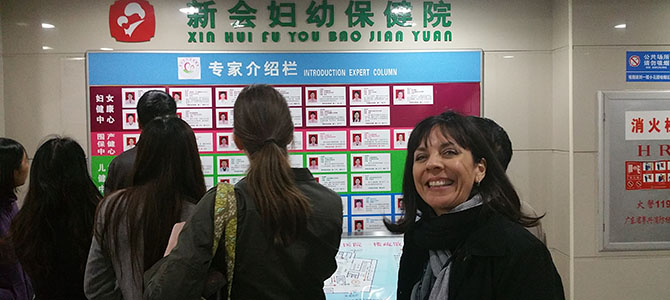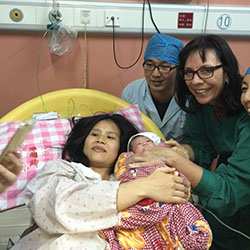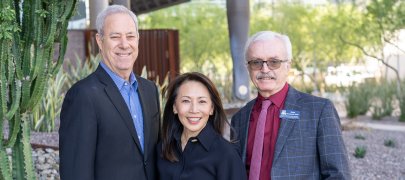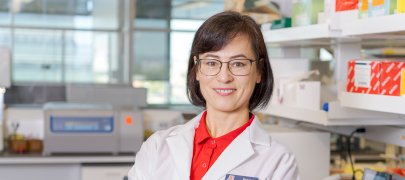
UA Doctor Trains Obstetricians in China

Maria Manriquez, MD, spent the first week of December delivering babies in China.
Her trip was part of the “No Pain Labor & Delivery” Global Health Initiative meant to introduce Chinese physicians, anesthesiologists and patients to epidural anesthesia during delivery.
The goal of the initiative is to reduce the cesarean delivery rate in China, which is among the highest in the world, by educating medical staff about neuraxial labor analgesia, more commonly known as an epidural. Ling Qun Hu, MD, assistant professor of Anesthesiology at Northwestern University, started the program in 2006 and since then, teams of doctors, anesthesiologists and labor and delivery nurses have traveled to China to establish obstetric anesthesia training centers.
During her Dec. 1-9 trip, Dr. Manriquez, director of the Obstetrics-Gynecology clerkship at the University of Arizona College of Medicine – Phoenix, performed two cesarean section deliveries and two vaginal deliveries. One of her successes was convincing the CEO of the Xinhui Maternity and Child Health Care Hospital to allow a father into the delivery room, and he was able to cut the umbilical cord of his newborn. Normally, husbands are not present in delivery rooms in China, she said.

In addition to delivering four babies, Dr. Manriquez lectured about the advantages of epidurals and instructed during delivery simulations. Among the reasons for the high c-section rate in the country is that many anesthesiologists have not had much experience using epidural analgesia, and some obstetricians fear the effects on the fetus. Also, for cultural reasons, many Chinese parents want to choose the date and hour of their child’s birth, because certain numbers are luckier than others.
“The visit and opportunity to experience and work with colleagues of another country and culture was one of the highlights of my career,” Dr. Manriquez said. “I was able to communicate based on the common language (using hand signals) in the operating room and, of course, a great interpreter colleague.”
Organizers of the No Pain Labor & Delivery initiative say the rate of cesarean deliveries has declined by as much as 20 percent since the program started.
Dr. Manriquez said she believes that with time, if protocols of massive blood transfusion and donor programs similar to those in the U.S. become the norm in China, “the use of regional anesthesia and willingness to trial of labor after a cesarean section will be more desirable than it is currently.”
Dr. Manriquez and Rebecca Fisher, Director of the College’s Gross Anatomy Lab, designed a curriculum for OB-GYN students that allows them to apply their knowledge in a surgical perspective by returning to the anatomy lab during their third- and fourth-years. In addition to her OB-GYN clerkship duties, Dr. Manriquez is the director of the College’s Pathway Scholars Program, designed for students who have experienced unique or greater than average challenges in preparing to become competitive medical school applicants.
Media Contact:
Marian Frank
Phone: 602-827-2022
Topics
About the College
Founded in 2007, the University of Arizona College of Medicine – Phoenix inspires and trains exemplary physicians, scientists and leaders to optimize health and health care in Arizona and beyond. By cultivating collaborative research locally and globally, the college accelerates discovery in a number of critical areas — including cancer, stroke, traumatic brain injury and cardiovascular disease. Championed as a student-centric campus, the college has graduated more than 800 physicians, all of whom received exceptional training from nine clinical partners and more than 2,700 diverse faculty members. As the anchor to the Phoenix Bioscience Core, which is projected to have an economic impact of $3.1 billion by 2025, the college prides itself on engaging with the community, fostering education, inclusion, access and advocacy.


